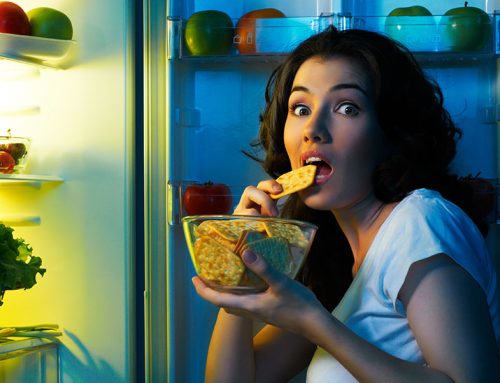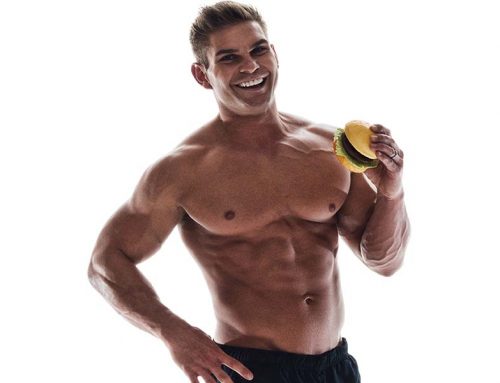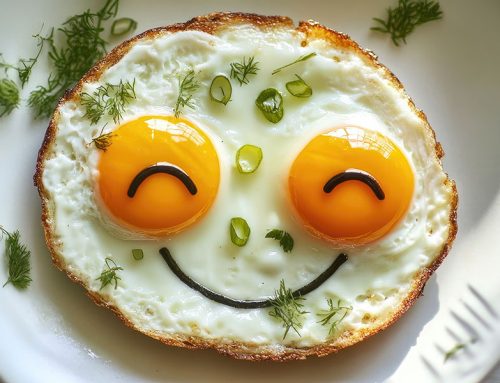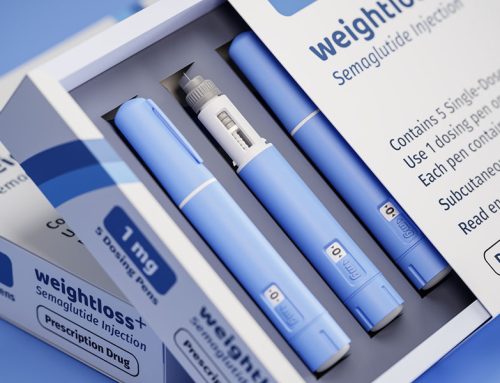You’ve heard of the “See-Food” diet haven’t you? No, that’s not the diet where you load up on fish, lobster, crab and mussels. The See-Food Diet is the one that so many of us crack jokes about – it’s the diet where you eat everything in sight! But don’t laugh too hard. Scientists at Cornell University and other research institutions have proven that you actually WILL eat more food if you see food more. In fact, if you can see it and it’s within arm’s reach, you could eat yourself obese within a few years and not even know what hit you because the eating happens unconsciously.
It should be common sense that when you’re constantly surrounded by food, you tend to eat more.
But one thing that hasn’t been clear until recently was how seeing food (visibility) and having it within reach (proximity) could influence unconscious eating (and how it influences what I call “eating amnesia”).
Developmental psychologists tell us that the more effort or time you invest in a unique activity, the more likely you’ll be to remember it.
In other words, if you have to go out of your way to go get food, you’ll remember eating it. If the food is right there within arms reach, you’ll munch away and more easily forget it.
For years, Dr. Brian Wansink of the Food and Brand Laboratory at Cornell University has been conducting fascinating experiments to find out what really makes you eat more food than you need.
Some of his previous studies revealed that taste, palatability, mood, stress, social context, role models (parental influence), visual cues, visibility and convenience can all influence how much you eat (Eating behavior is environmentally and psychologically influenced – appetite is not just biological).
To explore the influence of food proximity and visibility on eating behavior, Wansink set up an experiment using 40 female staff members from the University of Illinois at Urbana-Champain. The subjects were not told it was a weight loss or calorie-related study. They were told that they would be given a free candy dish filled with chocolates (candy “kisses”) and they’d be contacted and surveyed about their candy preferences. They were also told not to share the candies, take them home or move the dish.
Participants were divided into four groups:
1) Proximate and visible (can see and reach)
2) Proximate and non-visible (can reach but not see)
3) Less proximate and visible (can see but can’t reach)
4) Less proximate and non visible (can’t see, and can’t reach)
During each day of the four week study, 30 chocolates were placed in 20 clear containers and 20 opaque containers and delivered to the 40 subjects. The containers were replenished every afternoon. They were kept in the same location for 4 straight business days and then rotated on the following week. Researchers kept a daily record of the number of chocolates eaten from each container and comparisons were made from the data collected.
At the end of each week, each subject was given a questionnaire which asked them how much they thought they had eaten over the entire week and asked them about their perceptions regarding the chocolates (such as “it was difficult to stop eating them,” “I thought of eating the chocolates often,” etc).
When the results were tabulated, here’s what Dr. Wansink and his research team discovered:
The visibility and proximity of the candy dish also influenced the subject’s perceptions. Regardless of whether participants could actually see the chocolates, if the candies were sitting on the desk (as opposed to being a mere 2 meters away), they were rated as more attention-attracting and difficult to resist. Candies in the clear containers were also rated as more difficult to resist and more attention attracting.
Most interesting of all, this study confirmed that when food is close by and visible, you’ll not only eat more, you’ll also be likely to forget that you ate them and therefore, underestimate how much you’ve eaten (I like to call that “eating amnesia.”)
Is a few extra candies a day really a big deal?
If it becomes habitual it sure is! Over a year, the difference between the candy dish placement would mean 125 calories per day which adds up to 12 extra pounds of body fat over a year.
When given the advice to keep junk food out of the house and office, I often hear complaints that it’s “impossible” to do because the rest of the family would have a fit, or simply not allow it. As for the office, one of the biggest excuses I’ve heard for diet failure is that the temptations are always there and it’s out of your control to change. Invariably someone else brings doughnuts or candy to the office.
Now you know what to do to reduce temptation and successfully stick with your program more effectively:
If you can’t keep it out of your office or house, keep it out of sight and out of arm’s reach.That alone is enough to reduce consumption.
At home, if your significant other or family is not willing to remove all offending foods from the premises, then get their agreement that their food is not to remain in plain sight – it goes in the back of a refrigerator drawer and not on the shelf at eye level, or if non-perishable, it goes inside a cupboard that is exclusively the domain of the other person.
At work, tell your office pals to keep the candy, doughnuts and other temptations off your desk, at a distance and out of sight. If they put any unhealthy snacks on your desk, promptly remove them!
Environmental cues can trigger you to eat impulsively. If you can see it and reach it, you’ll eat more of it, and you’ll forget how much you ate. So get the junk out of your home and office now and if you can’t, then get it out of your sight. If you can’t do that, get it out of arms reach.
-Tom Venuto
PS. I thought this was a perfect topic for the week after Halloween. You got any leftover Halloween candy floating around the house and office? Is it in a bowl right there where you can grab it?
PPS According to the NPD Group, which conducts research on eating trends, parents eat one candy bar for every two their children bring home on Halloween! (Who else is throwing out or at least “hiding” their leftover Halloween candy right now?)
About Tom Venuto

References:
The office candy dish: proximity’s influence on estimated and actual consumption. Wansink B, Painter JE, Lee YK. Int J Obes, 30(5):871-5. Cornell Food and Brand Laboratory, Cornell University, Ithaca, NY, USA.
Resources:
Mindless Eating: (Why We Eat More Than We Think)
The Body Fat Solution (The behavioral, psychological and emotional side of losing weight and keeping it off)
Burn the Fat, Feed the Muscle (Fat-Burning “Nutrition Bible)







I totally agree with that. My main thing I crave is salty snacks so I don’t buy them very often. I know if there’s a bag of “baked chips chances are they’ll be gone in a couple of days.
completely true for me tooi never ever snack, but if im sitting around the table with friends with food on the table, i will eat it, i actually think i want it, and i literally can’t help the overwhelming desire for it.i will stop doing that and put food on another bench, so if you want it, you have to get up to go get it.going camping this weekend, and will try out your (my new) method.Leesa
A few days after Halloween, my kids have lost interest in the candy. But there it still is, calling my name.If you hate to waste perfectly good candy, but don’t want it to end up on your rear end, you can send it to this organization, they will put it in a care package for our troops overseas:http://www.opgratitude.com/index.php
Excellent article Tom. As I was reading it, I was thinking about what is out in the kitchen in plain site and how much of it I consume or am at least tempted to consume. Bread stuffs are on a rack in plain site, other processes carbs on top of the fridge. At least my sons Trick or Treat bag was not transparent and is tucked away on top of the fridge. But come to think of it, I did sneak a peak just this morning, and oh I might have had just one little treat out of that bag:) Great article Tom! Looking forward to the upcoming challenge! Plan to knock it out of the park on this one!Scott Murphy
So true. I always say if you cannot see it you will not eat it.
This is very true. I remember when I was working in corporate America I had co-worker that had a jar of candy sitting on her desk everyday.I noticed that would get candy from her at least 2 times a day. But she ate at least 6 pieces of candy everyday because it sitting right next to her. It’s nice hearing the science behind this eating behavior. Great post.James
I could’ve told them that. lolLeftover Halloween candy always leaves my house next morning. I also make sure that after big family dinners like Thanksgiving I throw away all the “bad” yet yummy leftovers that I can’t get others to take home with them.
Yes, I agree with the arm’s reach problem and unconscious eating..I usually have a cookie from the cafeteria in my desk drawer for an “afternoon snack”, but I eat it earlier and earlier since I know it’s there. Sometimes I even eat the cookie before my lunch meal even thought my lunch is on the desk in front of me.Sigh. It could be worse, at least I get a slight bit of fiber in the oatmeal cookie unlike a chocolate chunk cookie.Starting on week three of a “cookie free” desk.
Out of sight, out of mind.I can even resist food that is on the table, just so long as it is behind something else and I can’t see it!
well I will say the families leftover trick or treater candy did not make it to November… or the pumpkin pie left on the counter
I could not agree more..but it works well the other way….I have dishes of fruit within reach and on show on the table, healthy seed and nut mixes and even vegetable nibbles……..not only do we snack on healthy choices, visitors often indulge as well.When my children were toddlers I used to leave healthy nibbles on little dishes all over the house, chunks of banana or fruit, with yogurt or fromage fraise dips and little bits of lean meat and shellfish..they loved their treats and grew up eating healthy food. I dont keep unhealthy snacks in the house, if anyone wants any they have to walk to the nearerst shop and buy their own.
i agree with you, so if i do away with snaks it will help.thanks i really appreciate all your lessons and bravo.
Its obviously really, I totally agree with this. That’s why the only visible food lieing around in my house is fruit.
This is a great study – but I could have told you that just from experience. Based on this info, I always tell my clients to keep all temptations out of the house. If it’s there you will eat it. I even have to do that myself – it is way to easy to grab a few candies every time you walk by the dish. It definitely adds up.
I have always wondered about the people whose hobby is cooking. Like the hosts of the cooking shows on TV. I have never seen one that is not overweight. I know that they make wonderful meals but constantly being around food all the time seems to be unhealthy.
This is definately true! One trick you can use also if your partner or kids deliberately refuse to co-operate in removing junk foods from sight, is to suggest to them that any chocolates/junk foods that remain visible will be either eaten, given away, or thrown anway! (obviously, you dont have to actually eat them!) but I guarantee you that the owner of the chocolates won’t want to lose them, so they’ll start taking hiding them alot more seriously!!) ;)
When one lives with others (5 of us here), they tend to resent my “diet” choices being forced on them. So stuff is present everywhere. I ignore, ignore, ignore, and then give in. I’m working at acknowledging servings sizes (no more than 2). And I’m confronting my thoughts that start my “sliding”. (Thanks to Tom’s “The Body Fat Solution”!)It’s a process. I just received a mental check last night. So I’m focusing in on my goals and making good choices…NO JUNK!
I’ll confess, I’m a social snacker. If there’s a tasty food to nibble on while I’m at a party, hanging out, or if I’m cooking and hungry, I’m going to nibble. End of story; I’ve got to have something to munch on! That said, given the choice I’ll go for the healthier selection.So, my solution is to bring out celery and carrot sticks when I cook dinner. I also keep celery in the office fridge. I’ll even grab a few stalks for the drive home if I’m kind of hungry ;-)When I go vist friends or family who don’t typically put out a veggie platter, I’ll bring celery and homemade (much lower calorie) humus or similar light dip.So, if your office keeps an irristable candy dish, counter balance it with a bowl of celery & carrot sticks. Believe it or not, people will thank you!Signed: Successfully Ex-chubby
I learned this trick when my kids were first old enough to trick or treat. I would put their Halloween candy in the pantry where they couldn’t see it and they eventually stopped eating it after a few days. Then I would just get rid of it. Our dentist now pays the kids to bring in their Halloween candy, a dollar a pound. Not sure what he does with it! So I keep all tempting treats in the pantry where we can’t see it all the time.
I remember joking around in college about being on the “seafood diet”… I see food and I eat it. I suppose there was more truth in what I was saying than I originally thought!Having less prepared and easy to consume food around the house is a great way to reduce over-eating. By having to actually take the time to prepare and cook your food, you are a lot less likely to have a lot of it. Not to mention that foods you cook yourself are usually a bit healthier than the foods you can just unwrap and eat (like snacks).
Whenever I dine out, I actually do two things in order to keep from continuing to eat just because food is in front of me:1. I always ask for a box when my meal arrives because the portion sizes are almost always twice as much as I really need for that meal. I immediately box half of my meal and eat the other half later.2. When I am done eating, I immediately place my napkin on my plate and push it further away from me. This keeps me from continuing to graze on whatever might still be on my plate even though I have already satisfied my hunger.These two small steps save me from overeating and help me to not overdo it when I go out to eat.
Here’s what happens at my house:
My wife makes cookies because she wants ONE. Then we have like 20 cookies just sitting on the counter.
Bad news for me.
I’ll definitely start hiding them, or making sure she makes a VERY small batch.
She has a lot more self control than I do, so we’re changing a few things around the house when it comes to food.